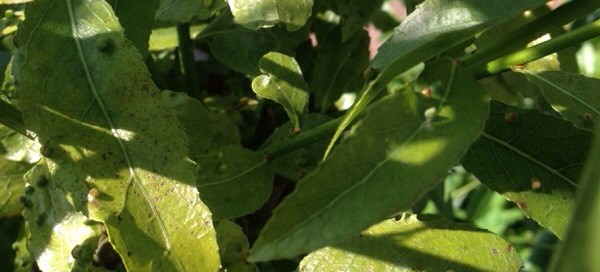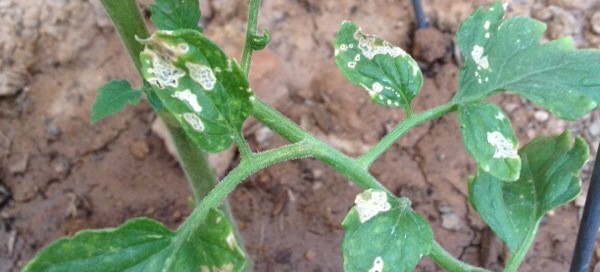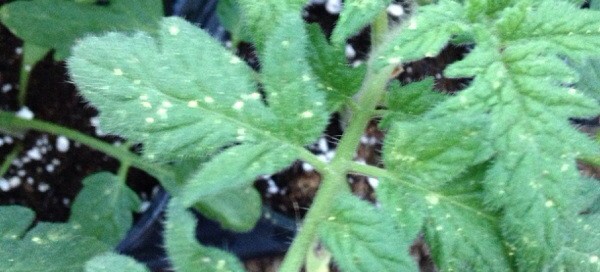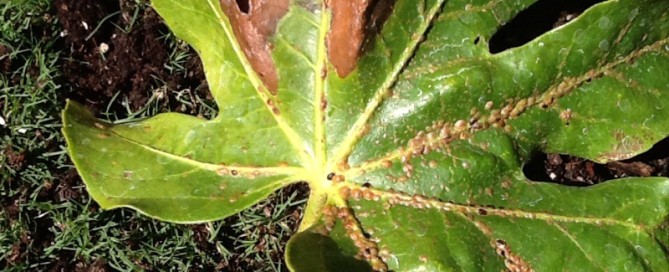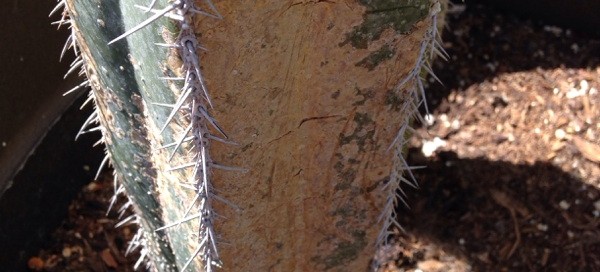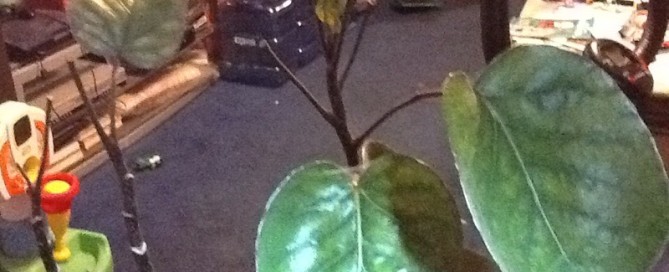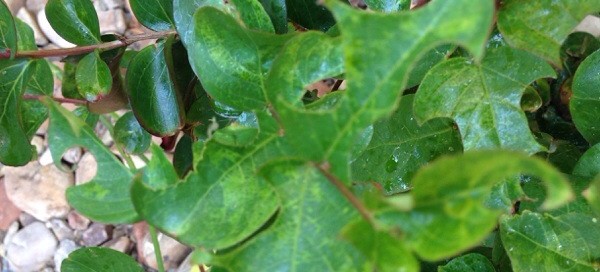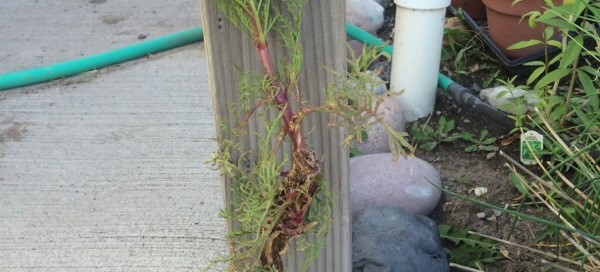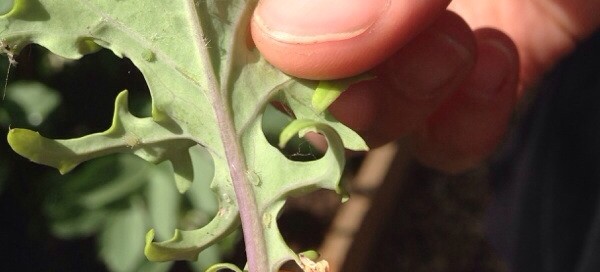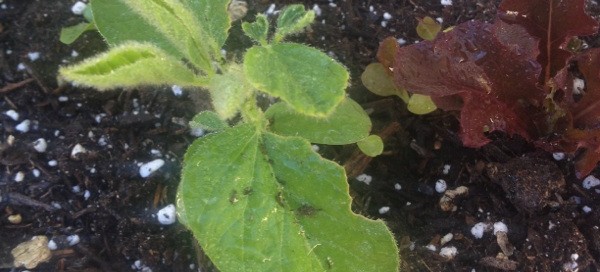Psyllid
We think the raised bumps may be psyllids, often referred to as plant lice. Suggest you take your photo or a few of the problem leaves to your local garden center for confirmation. If they are psyllids, they suck the nutrients out of the foliage and stems, but if the infestation is not too extensive, most horticulturists recommend leaving it alone. However, if the infestation is severe, spray with an organic control effective against chewing insects such as Spinosad with a residual of 7-10 days. Spray in the early evening when bees have returned to their hives. Once the spray on the plants has dried it is completely safe for beneficial insects. Another option is to spray with a horticultural oil. The oil will act as a suffocant.
